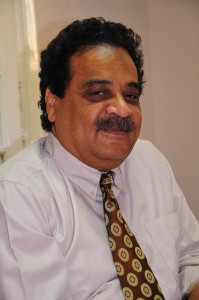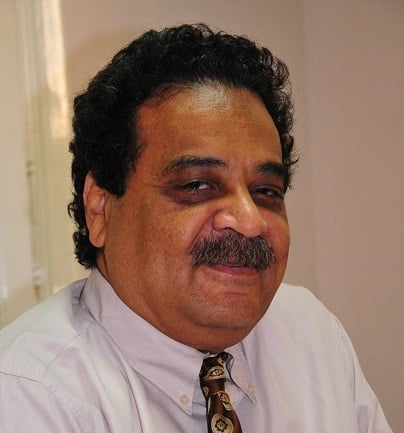
The number of “Islamic” or “quasi-Islamic” parties has officially reached 12. The parties can be categorised into three groups: the first are “political” Islamist parties, the second are “religion-based political” Islamist parties, and the third are the “radical” Islamist parties, or rather of radical backgrounds.
At the heart of all these parties is the Freedom and Justice Party, followed by the Al-Nour Party and the Building and Development Party. It should be noted before going into any further detail that each of these three parties is a political arm for an Islamic organisation: The Freedom and Justice Party is the political arm of the Muslim Brotherhood, Al-Nour is part of the Salafi movement, and the Building and Development Party is the political organisation of Al-Jamaa Al-Islamiya. This trend justifies our need to investigate what these politic wings represent and the meaning of such a repetition in parties of Islamist nature.
The general belief is that the idea for the political Islamist party is the product of intention and awareness of a Muslim who happened to be a member of one of the aforementioned organisations, which is a bit unclear. The joining of these organisations indicates that this Muslim has moved from a place of disbelief to a place of Islam. It almost means that this person has joined a new religion or at least a new doctrine or sect. In addition, being a member of this sect is different than being a member of the political party representing the sect. A sect might not have a political part, but it remains anyway, and it is only disbanded if the religious method it follows ends. Each sect has its own allegations, rituals, rites, obligations and values, which go beyond its political commitment.
The Muslim Brotherhood, like the Salafi movement and Al-Jamaa Al-Islamiya, regard themselves as a sect, and not only a party or political organisation, to the extent that they only marry, and conduct business within their own society. Having the characteristics of a sect indicates that their strength surpasses their size. Despite the existing conflict between the three organisations, they still adopt the same sectarian mannerism.
It should be noted that the Islamist political parties, which were originally created by their sects, remain under the control of their respective organisations unless the party transforms itself due to conflicts within the sect’s leadership. This usually happens if circumstances dictate that the sect disappears from the public eye, which is something unlikely to happen in Egypt.
It is important to stress the real leadership of these political parties remain in the sects. The Islamist political parties to their organisations resemble the former cabinet’s relationship with Mubarak, which was once deemed as “secretaries of the president” by Youssef Waly. In reality, the leadership of the three parties, considered one of the most important Islamist parties in Egypt, acts as a secretarial division to their sects. Therefore, I will address the Muslim Brotherhood, the Salafi movement or Al-Jamaa Al-Islamiya instead of their respective parties since the final decision belongs to them.
The first section, the political Islamist parties, includes in addition to the Muslim Brotherhood, the Al-Nahda, Al-Wasat, Egyptian Current, and Misr Al-Qawia parties, and maybe the Egypt Party and the Civilisation Party. We will notice that of all six parties, there are four parties that broke away from the Muslim Brotherhood. In addition, all the parties, other than the Brotherhood, are not affiliated with any organisation or sect. We also included Al-Nahda, Al-Wasat and Al-Hadara parties even though they mysteriously deny that they are religious parties despite consistently working with the Muslim Brotherhood. The Egypt Party is led by the famous Islamic preacher Amr Khaled; however, it is a civil party. Yet, some information indicates that the party, which is formed mainly of young people in the charity sector, has been recently infiltrated by sleeper cells of the Muslim Brotherhood. Therefore, there is now a gap in the party between its base and its leadership. It is expected that the party will proceed in a pro-Muslim Brotherhood direction despite its leaders’ expectations.
Remarkably, the parties which have emerged from the Muslim Brotherhood domain seem more moderate, like the Al-Wasat Party which has connections with civil society organisations and often speaks of democracy. It also condemned violence and extremism of some Islamic organisations. The Egyptian Current Party is mainly formed of young members of the Muslim Brotherhood who participated in the 25 January Revolution and formed connections with the youth of other political parties. As for the Al-Nahda party, led by Habib and Al-Zaafrany, and Misr Al-Qawia, led by Abdel Moneim Abul Fotouh, their advertised message seems much more moderate than that of the Muslim Brotherhood, and maybe even more open-minded.
It should be noted that these parties have often criticised the Muslim Brotherhood for being close-minded and undemocratic, indicating that they are a closed-off and self-sufficient sect.
Many analysts see that some of the defections from the Muslim Brotherhood are untrue, and they are intentionally done to create space between the Brotherhood and civil movements. This would eventually allow the Muslim Brotherhood to indirectly affect civil movements. This analysis has garnered some attention lately, especially after the Al-Wasat Party’s suspicious performance, which always seemed to “serve” the Brotherhood’s policies. In addition to this, Abou Elela Mady, the leader of Al-Wasat who was once a member of the Brotherhood during the 1970s, has fervently defended the Muslim Brotherhood. His membership to the Brotherhood was secretly maintained for four years because of also being a member of Al-Jamaa Al-Islamiya. This begs the question: did the Muslim Brotherhood push Abou Elela Mady inside Al-Wasat as a scouting submarine as they had done once before with Al-Jamaa Al-Islamiya?
I do not want to force my opinion, but I see that what was done by Mady in the 1970s can be repeated, and also by others who have seemingly “defected” from the Brotherhood. The Brotherhood has never criticised such behaviour, and therefore there is nothing to prevent them from repeating it.
The Muslim Brotherhood is the most influential organisation in the political Islamist parties’ group, and it is the group that adopts the most conservative practices. It is also the group most active in politics which works directly to create political programmes and policies. It also offers detailed plans to achieve its political goals, using known practices to execute them. The social makeup of the group belongs to the intermediary classes of urbanites of rural backgrounds. Therefore, it is not surprising that the Muslim Brotherhood, along with their other parties, would garner support and leadership inside vocational unions. In addition, the Brotherhood’s influence in the unions originally comes from their influence inside universities. That is not to mention the strong support of former president Anwar Al-Sadat of the Brotherhood during the 1970s to face leftist student movements. Facts support that the allegiance of students from rural universities and university hostels with the Brotherhood was the fertile soil in which the influence of the Brotherhood grew. It was that same influence that later moved to labour and vocational unions.
Next time, we will address the social background and ingredients of the other two sections of the political Islamist movement, and the relationship between all three sections.








